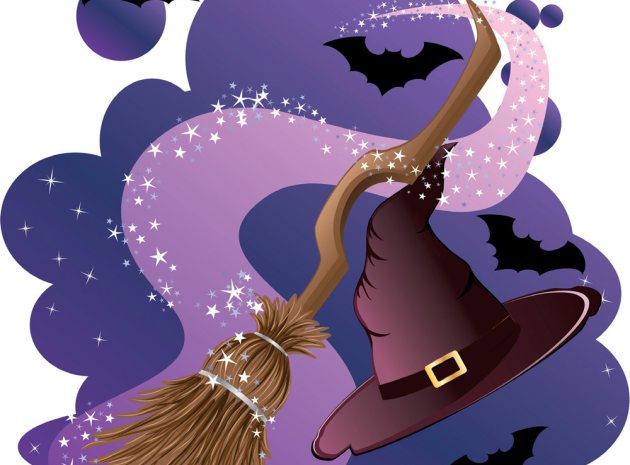Jo Tweedale shares a gentle but stretching introduction to Shakespeare that every student can access…
Why teach this?
Inclusivity is a vital element of all teaching, of course – but instead of considering ‘differentiation’, why not try thinking about ‘personalisation’? The idea of tailoring a lesson to meet the specific, individual needs of every single student in the room might seem daunting, however, as Jo Tweedale explains, it is achievable, given enough planning and a few handy props – and especially important when you are working with the lowest ability pupils…
The acroynm ‘SEND’ and the word ‘differentiated’ for me do not go hand in hand. What works for me – and, more importantly, for the pupils, I teach – is personalisation and there can never be enough of it. From the moment they walk in the door to the end of the lesson everything is personalised and tailored to meeting even the most vulnerable of needs, whether that means specific furniture, an audio loop or additional practical materials. Fun, variety and flare run alongside each and every lesson, often with me having a prop or two (in this case, a witch’s hat to pop on my head). My favourite comment to hear at the end of the lesson is “it can`t be over yet!” – it’s both inspiring and heart rending, and I’m privileged to hear it as often as I do. The excitement and sadness when a pupil moves up a set is what makes my job as a teacher worthwhile… hence I have been doing it so long!
The following lesson is an example of how SEND and personalisation go hand in hand. It is an English lesson that meets the needs of very low ability pupils and always starts and ends with music. It combines a speech and language programme, a phonics programme and the scheme of learning. A lot to squeeze into one lesson you may say, but it works on a carousel over two lessons with a different starter and summary in each. It is taken from the Shakespeare’s magic unit.
Learning Objectives
This is the general objective we go over at the start of each lesson about what we want to achieve in this unit:
“I talk and listen confidently in many ways in many different situations. I think carefully about whom I am speaking to and make sure what I am saying is appropriate. I understand a range of texts and can select the essential points from them. My writing is both varied and interesting.”
And the specific objective for this lesson (C):
- To understand that witches were viewed to be bad in Elizabethan times
- To form opinions about witches
- To use adverbs and verbs appropriately
Starter activity
These lessons always start with quiet piano music as the pupils read their Accelerated Reading books, either alone to an adult or to one another. If they finish the book they take a computerised knowledge quiz, to encourage and promote self-esteem in their ability abd to experience that reading to an audience, however small, need not be daunting. They also check their books for extended previous learning tasks, which they complete in pink ink. It’s a great way of overlearning, assessing retained knowledge, marking for literacy and purpose, encouraging reflection and helping them be aware their work is valued and regularly marked with feedback. Previously, we will have been working on verbs and adverbs separately. Today, then, we will combine the two as an overlearning activity and mini assessment to see if the students can self and peer assess, an effective way to develop independent working and use of AFL. The challenge is look at a series of pictures, and fill the gap in a sentence describing each one with an adverb or a verb. A sand timer is used to show each table how long they have to complete the task. We then peer mark and pupils wishing to answer the questions use the microphone and the ‘hot seat’ to share the answers. We use the TED principal for answering questions in class: tell me, explain and detail.
We then split into our three groups for carousel activities; it’s a quick and efficient transfer, as the students are used to the routine.
Main activities
1. Phonics work
This group will use the computers to access a phonics programme that is completely tailored to their own stage of development and ability. Having a head set ensures they are completely focused on their task. They have a timer to show how long the task has to last. The timers vary depending on length of time set for each of the carousel activities.
2. Descriptive language
These learners take a descriptive language challenge using a speech and language programme. Using the SOL unit, they have to use adverbs and verbs to create a missing poster for a witch who has lost her cat. Cue cards are given to remind them about grammar and punctuation. They have visual images to assist with this and a template for writing, which is personalised for them (enlarged sheet, colour of paper, sentence starters, dictionary.com on 1 to 1 devices for spellings etc). The activity reassesses their understanding of verbs and adverbs.
An extension activity will be to use the character sheet to create their own character connected with topic.
3. Expressive writing
The group is given a set of visual images of Elizabethan witches and a tally list (how does the image make them feel, appearance of the image, the setting etc.) to help them write down their thoughts about witches in Elizabethan times (prior lessons will have taken place to investigate what is meant by Elizabethan and what happened to witches in those times). Again, cue cards are with each pupil for grammar and punctuation. This activity is to extend their ability to write a creative piece of writing based on a visual stimulus.
Finally
Once the carousel activities have been completed, the groups come together again and we watch together a clip of one of the witches’ scenes from Shakespeare’s Macbeth. The students use mind mapping techniques to write down their opinions, and adverbs and verbs to describe what they have seen.
Home learning
From this start, encourage students to spend some time looking further into Shakespeare’s plays, and bringing in any scenes they particularly enjoy to share with the rest of the class. Alternatively, they could use verbs and adverbs to create magic spells of their own.
About our expert
Jo Tweedale is director of SEND and Community Inclusion, Ormiston Venture Academy, Gorleston-on-Sea, Norfolk. “The thing I love about teaching and still do,” she says, “is the fact that I have had so many incredible experiences that have promoted lifelong learning.”
Route to Reading
Lexonik is a unique literacy programme that is proven to boost reading ages by over 24 months in just six weeks. Aimed at mainstream pupils at KS3 and KS4, it dramatically improves decoding and comprehension skills and develops the reading fluency and key subject vocabulary to needed to unlock the entire curriculum. You can have your own staff trained to deliver the programme, or use the company’s own team of qualified, experienced teachers at your school. Either way, your pupils will see dramatic improvements in their literacy skills.
For more information, visit www.lexonik.co.uk, email enquiries@lexonik.co.uk or call 01642 424298.











Jo Tweedale shares a gentle but stretching introduction to Shakespeare that every student can access…